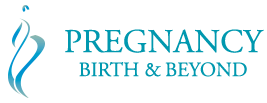When most of us think of a breastfeeding mother, we automatically link this with pregnancy. After all, in order to breastfeed, don’t you first have to give birth to a baby? The truth is that while conventionally speaking pregnancy and breastfeeding are intrinsically linked. It is possible for a woman to develop a breast milk supply without ever having given birth, or long after she has done so. This is referred at as induced lactation or adoptive breastfeeding.
Throughout history and in the present day, many women for many reasons have explored and/or attempted to induce lactation. Some may have a desire to breastfeed an adopted baby. Others may have initially chosen not to breastfeed. The reasons choosing not to breastfeeding include:
- difficulties with breastfeeding
- ill health, lack of support
- or other factors
Women who chose not to breastfeed in the beginning, may now wish to attempt to breastfeed their child. Whatever the motivation, there is certainly reason to hope and with perseverance, information and support many women can achieve induced lactation.

What Prompts Lactation?
Before attempting to induce lactation it helps to understand how this process occurs naturally in a pregnant woman. The production of breast milk is triggered by a complex interaction between three hormones:
- Oestrogen
- Progesterone
- Prolactin
A pregnant woman’s body throws out clues of this process in the form of visible changes to the breasts, including increasing size.
At birth a woman’s estrogen and progesterone levels plummet but her prolactin level remains high. This chain reaction triggers the brain to produce breast milk. The key then in successfully achieving induced lactation lies in replication of the natural biological process which ordinarily causes it. There are essentially two options for doing so – using medications to assist the process or making the attempt without them.
Using Hormonal Supplementation
Assuming you have a few months to prepare, your doctor may offer hormone therapy intended to mimic pregnancy. This generally consists of supplementing your estrogen or progesterone levels which prompts your body to begin preparing your breasts as it would in pregnancy. Having taken care of your estrogen and progesterone levels there is one remaining hormonal ingredient to be replicated – prolactin.
While prolactin levels remain high immediately after birth they will not remain there without the brain being stimulated to do so. It is a baby being put to the breast and feeding which effectually maintains the supply of prolactin in a woman’s body. Without this stimulation her milk would eventually dry up. However the same reaction can be achieved in reverse – stimulate the breasts and prolactin will be produced.
Regardless of whether you choose to use a course of hormonal supplementation or not, stimulation of the breasts is an essential ingredient in successfully establishing induced lactation.
Producing Prolactin – Breast Stimulation
In order to elevate and maintain prolactin levels a hospital grade electric breast pump is generally the most effective option. Keeping in mind that the intention here is to mimic the needs of a baby and prompt the brain to respond with breast milk, mimicking the feeding of a newborn is usually most effective.
Keeping in mind infants feed every three to four hours, you will need to pump your breasts this frequently, including at least once at night. To reduce potential discomfort, introduce this ritual gradually starting with 10 minutes per session and working your way up to sessions of around 20 minutes. If is preferable to pump both breasts at every session.
Choosing Not to Use Hormone Supplements
If you decide that hormonal supplementation is not for you, lactation can still be achieved using purely breast stimulation. It may however be more challenging to establish a supply. You may like to take advantage of natural preparations demonstrated to increase breast milk supply, to help this along. Products such as Weleda Nursing Tea can assist.
In addition there are some medications which, while not originally created to boost breast milk supply, have been shown to do so. In Australia the most commonly used of these is Motilium. Motilium is generally utilised to address symptoms of nausea and vomiting in both children and adults, and reflux or heartburn in adults. However in addition it has been shown to boost breast milk supply.
Like any pharmaceutical preparation Motilium can have side effects but these are rare. While traces of the active ingredient within Motilium do pass into breast milk, there has been no evidence to date of this harming infants. One option if you are concerned about this is to use a drug such as Motilium during your preparation phase when you are pumping your breasts but not actually feeding your baby, ceasing the medication later.
Starting to Feed Your Baby
Assuming for a moment that you are adopting an infant, it will be important to begin putting your baby to the breast from day one. At the same time though it will be important to continue using your breast pump in between feeds to continue to build your milk supply.
Seeking the help of a qualified lactation consultant with experience in induced lactation can be particularly helpful in ensuring that your baby latches onto the breast well. A poor latch is the most common cause of nipple damage and after all your hard work, the last thing you need at such a crucial time is damaged nipples. Poor latch and nipple damage can happen in any breastfeeding relationship whether natural or induced.
What If My Supply is too Low?
Because you are attempting to replicate nature it is important to accept that your breast milk supply may initially be insufficient to meet your baby’s needs. This may require you to supplement your baby with either donated breast milk if it is available or with formula. In order to ensure your breasts continue to be stimulated while doing so though, it is advisable to use a supplemental nursing system.
The most commonly available of these is the Medela Supplemental Nursing System. This system enables you to feed your baby supplementary feeds at your breast and can be used by woman with supply issues of any sort. Using a nursing system has multiple benefits including avoiding the need to use bottles and continuing to boost your prolactin levels. Emotionally speaking, using a nursing system can allow you to continue to build a breastfeeding bond with your child while supplementing their feeds.
If you do decide to bottle feed your baby in between breastfeeds, keep in mind that you will need to pump your breasts to protect your breast milk supply. Also consider that some infants, given the option of drinking from a bottle may be less inclined to return to the breast, possibly introducing a new hurdle to overcome.
What if I Don’t Have Time to Prepare?
If you are adopting a baby you may receive minimal notice of your baby’s arrival. In this case, hormonal supplementation will not be an option. However using other preparations is, such as herbal teas and pharmaceuticals shown to boost milk supply. Using a supplemental nursing system will be essential to ensure you can start feeding your baby at your breast from the outset. Obviously having time to prepare is preferable. However the absence of time is certainly not a reason to be dissuaded from attempting to induce lactation.
The same holds true for inducing lactation to feed a child already in your care. Using a supplemental nursing system will be enable you to immediately begin introducing your baby to breastfeeding with the milk they receive will encourage them to feed. At the same time, pumping in between feeds will help to build your own supply.
What if I Never Produce Enough?
As stated at the outset, motivation and perseverance are essential to achieving induced lactation. It can be hard then if you find that despite your best efforts you are unable produce sufficient breast milk over time to feed your baby. This is a bitter pill to swallow for any woman intent on breastfeeding, whether they came to it through pregnancy of lactation induction.
The most important thing to remember is that the benefits of breastfeeding to both women and babies are well proven. Every drop of breast milk your baby receives is doing immeasurable good to their current and long term health, and creating a precious bond between you. Every feed is also providing health benefits to you, including a significant reduction in the rate of breast cancer. Keep in mind too that with the introduction of solids, supply becomes a less pressing issue and you may well then have enough milk to satisfy your baby.
No matter your level of supply, inducing lactation and breastfeeding your baby is most definitely worth the time and effort you will put in to achieve it.

Support for Induced Lactation
If you would like to learn more about induced lactation it can be valuable to seek the support of a qualified lactation consultant, particularly one with experience in supporting women to induce lactation. The Lactation Consultants of Australia and New Zeland website sites offer a Find a Lactation Consultant facility you may find useful.
In addition, the Australian Breastfeeding Association to offer information and online communities. See the Australian Breastfeeding Association website. They also offers telephone support.
Reviewed 10th September 2020

 Wish List
Wish List
Recent Comments